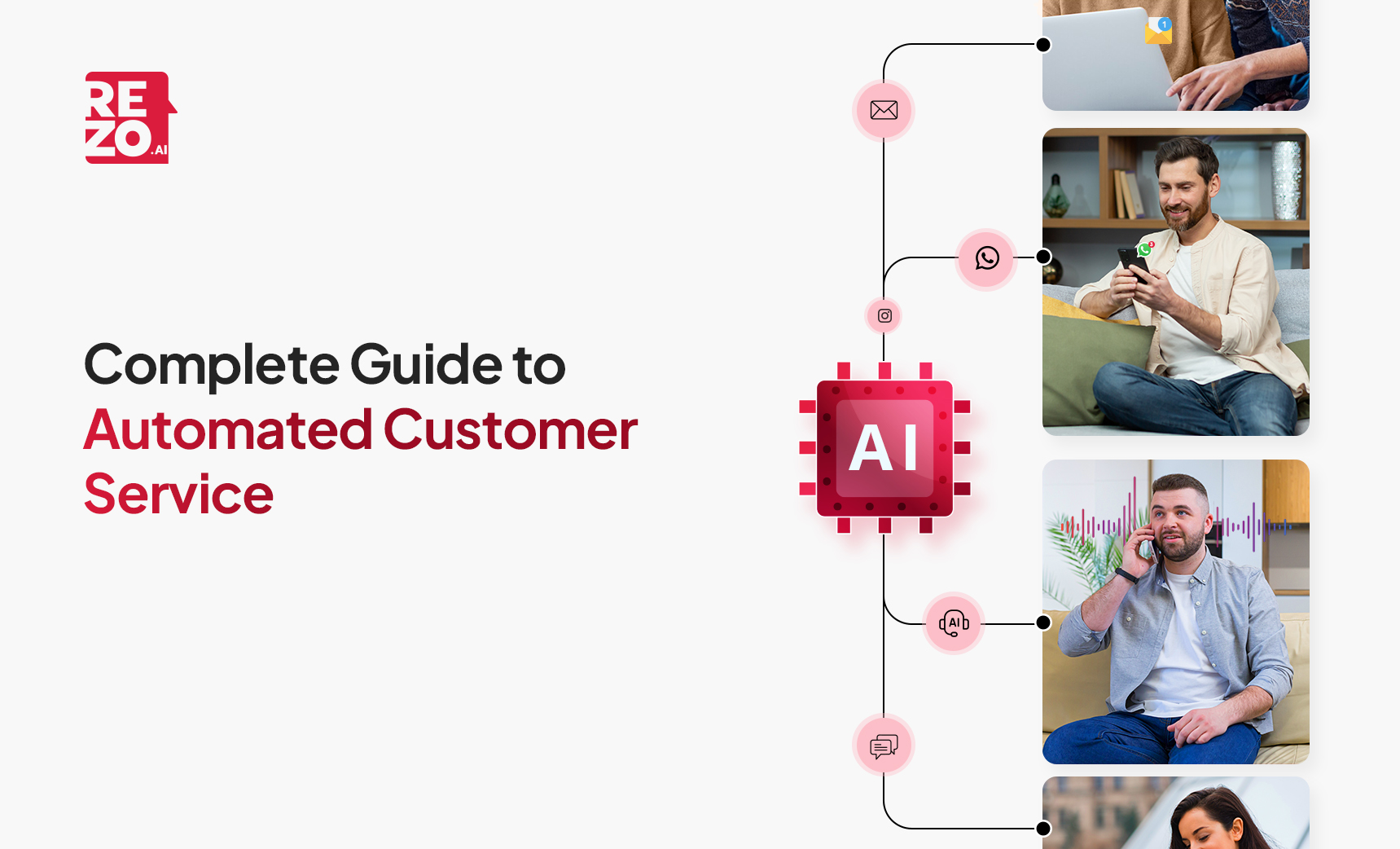
Customer Sentiment Analysis: Unlocking the Voice of the Customers

Customer Sentiment Analysis: Unlocking the Voice of the Customers


86% of buyers pay more for great CX – but how do you measure what customers really feel about your product?
In a world where customer experience has become the ultimate differentiator for brands, understanding the emotional undercurrent of customer interactions is no longer optional – it’s a necessity.
In this blog, we’ll be diving deep into customer sentiment analysis, the technology that’s transforming how businesses understand their customers’ emotions, opinions, and feedback.
From defining this powerful analytical approach to exploring implementation strategies and future trends, we’ll cover everything you need to know to harness the voice of the customer and drive meaningful business outcomes with Customer satisfaction.
What is Customer Sentiment Analysis?

Customer sentiment analysis, also referred to as opinion mining, is the automated process of identifying, extracting, and studying subjective information from customer data to determine attitudes, emotions, and opinions.
By applying natural language processing (NLP), machine learning, and computational linguistics, businesses can systematically identify whether customer interactions are positive, negative, or neutral and to what degree.
This analysis plays a crucial role for companies in:
- Customer Experience Management: Identifying pain points and areas of delight in the customer journey.
- Product Development: Guiding feature prioritization based on customer sentiment.
- Customer Retention: Detecting early warning signs of dissatisfaction before customer churns.
- Competitive Intelligence: Understanding how customers perceive your brand versus your competitors.
Why is Customer Sentiment Analysis Important?

Customer sentiment analysis is a powerful method used to decode customers’ emotions, opinions, and attitudes in their feedback.
Unlike simple customer satisfaction metrics, this approach uncovers deeper emotional insights then positive and negative sentiments such as trust, customer loyalty, excitement, frustration, and disappointment that directly influence business decisions.
Here’s why Sentiment Analysis in important for any company:
- Enhanced Customer Experience: By identifying pain points and areas of delight, businesses can optimize interactions and improve overall satisfaction.
- Personalization: Understanding sentiment allows businesses to tailor their products, services, and marketing efforts to match customer expectations.
- Strengthens Brand Loyalty: Analyzing sentiment trends helps in building stronger relationships by proactively addressing concerns and reinforcing positive emotions.
- Optimizes Marketing Campaigns: Sentiment insights reveal how customers perceive branding and advertising, allowing for more impactful and resonant campaigns.
- Improves Product & Service Development: By monitoring feedback, businesses can refine their offerings based on what truly matters to customers.
- Tracks Business Health: Sentiment analysis acts as an early indicator of brand perception shifts, helping businesses stay ahead of potential issues.
At its core, customer sentiment analysis is not just about what customers say, it’s about understanding the emotions behind their words to get meaningful business outcomes.
Types of Customer Sentiment Analysis

There are several types of customer sentiment analysis, each offering unique insights into customer feedback:
1) Aspect-Based Sentiment Analysis
This type evaluates the sentiment expressed for each aspect of a product or service. A review might be positive about the product quality but negative about the customer service. Aspect-based analysis helps businesses pinpoint specific areas that need improvement.
Example: “The car’s engine performance is phenomenal, but the ride comfort is subpar.” (Positive sentiment on performance, negative on comfort)
2) Emotion-Based Sentiment Analysis
This approach seeks to understand the psychological state of the individual behind a body of text. It goes beyond positive or negative sentiment to identify emotions like joy, anger, sadness, or surprise, providing a deeper understanding of customer interactions.
Example: “Your service was amazing, would like to recommend my peers too” (Emotion: Joy)
3) Fine-Grained Sentiment Analysis
This method groups text into different emotions and the level of emotion being expressed. It offers a more detailed view of customer sentiment, allowing businesses to recognize not just whether feedback is positive or negative, but how strongly the sentiment is felt.
Example: “The service was okay, but not great.” (Mildly negative sentiment)
4) Intent Analysis
This type of sentiment analysis aims to understand the underlying intent behind customer feedback, such as whether they plan to make a purchase, seek support, or provide a complaint. By identifying the customer's intent, businesses can tailor their responses and improve service.
Example: “I’m thinking to buy a 4-wheel drive car. Can I visit your showroom for a test drive?” (Intent: Purchase inquiry)
5) Sarcasm Detection
Sarcasm detection focuses on identifying ironic or sarcastic remarks that might convey negative sentiment despite using seemingly positive words. Recognizing sarcasm ensures that the true sentiment of the feedback is correctly interpreted.
Example: “Wow, this app crashes every five minutes—such a fantastic experience!” (Sarcasm: Negative sentiment masked as positive)
How Customer Sentiment Analysis Works

Customer sentiment analysis uses automated tools and techniques to analyze and understand customers’ emotions, opinions, and attitudes in their feedback.
The process involves the use of natural language processing (NLP) and machine learning algorithms to analyze text data and identify patterns and relationships between words and their sentiment.
NLP techniques help in breaking down and understanding the language used by customers, while machine learning algorithms recognize patterns and learn from customer data to improve accuracy over time.
By scanning through vast amounts of text data, these tools can detect subtle nuances in customer feedback, such as sarcasm or cultural references, that might otherwise be missed.
The results of the analysis can then be used to make informed decisions and improve the overall customer experience, ensuring that businesses stay attuned to their customers’ needs and preferences.
Customer Sentiment Analysis Insights
The consequences of overlooking customer sentiment can be severe and far-reaching:

- Customer Churn: Over 50% of customers will switch to a competitor after just one negative experience, and that number jumps to 80% after multiple poor interactions.
- Revenue Loss: Businesses lose approximately $75 billion annually due to poor customer experiences.
- Brand Reputation Damage: Negative sentiments spread faster and wider than positive ones, with the average unhappy customer telling at least 9 people about their experience.
In this digital age, where customer opinions can go viral in minutes, staying attuned to customer sentiment isn't just good practice – it's essential for survival of the business.
Key Benefits of Using Customer Sentiment Insights

Implementing robust sentiment analysis yields numerous advantages:
- Improved Customer Experience: By identifying pain points in real time, teams can address issues proactively rather than reactively.
- Reduced Churn Rates: Early detection of negative sentiment allows for intervention before customers decide to leave.
- Product Gap Identification: Analyzing sentiment across product features helps prioritize development efforts.
- Enhanced Marketing Effectiveness: Understanding emotional triggers enables more resonant messaging.
Sentiment Analysis Process: Raw Data to Actionable Insights
.jpeg)
Sentiment analysis tools are essential for businesses looking to understand customer emotions and reactions. These tools can process and interpret large volumes of text data from various sources, providing valuable insights into customer sentiment.
By analyzing this data, businesses can identify trends and emotional cues, allowing them to respond effectively to customer needs and preferences. These tools can scan through vast amounts of text data to detect subtle nuances in customer feedback, enabling a more nuanced understanding of customer sentiment.
Data Collection
Effective sentiment analysis begins with gathering data from diverse sources:
- Reviews and Ratings: E-commerce platforms, app stores, and review sites.
- Survey Responses: NPS, CSAT, and open-ended feedback questions.
- Social Media: Mentions, comments, and direct messages.
- Chatbot and Live Chat Logs: Customer service interactions.
- Emails and Support Tickets: Written communications with customers.
- Call Transcripts: Voice-to-text conversions from support calls.
The richer and more varied your data sources, the more comprehensive your sentiment picture will be. Identifying specific keywords in customer feedback can provide valuable insights.
Text Processing & NLP
Once collected, raw text data undergoes several preprocessing steps:
- Tokenization: Breaking text into individual words or phrases.
- Lemmatization: Reducing words to their base form (e.g., “running” becomes “run”).
- Stop Word Removal: Filtering out common words that add little semantic value.
- Part-of-Speech Tagging: Identifying nouns, verbs, adjectives to understand context.
- Entity Recognition: Identifying mentions of products, features, or competitors.
- Emotion Detection: Recognizing emotional states beyond simple positive/negative polarity.
These processes transform unstructured text into structured data that algorithms can analyze. Customer sentiment analysis tools facilitate these preprocessing steps to transform unstructured text into structured data.
Sentiment Scoring to Recognize Patterns
The core of Customer sentiment analytics involves assigning values to customer feedback, identifying what customers like or dislike about a product or service:
- Polarity: Classifying text as positive, negative, or neutral.
- Intensity: Measuring the strength of sentiment (slightly negative vs. extremely negative).
- Context Awareness: Understanding sentiment based on industry, product, or situation context.
- Topic-Based Sentiment: Breaking down sentiment by specific aspects or features mentioned.
Advanced systems can detect nuances like sarcasm, idioms, and cultural references that might otherwise lead to misclassification.
Visualization & Reporting
Transforming sentiment data into actionable intelligence requires effective visualization:
- Sentiment Dashboards: Real-time monitoring of overall sentiment trends.
- Word Clouds: Visual representations of most frequent terms by sentiment.
- Topic Clusters: Grouping feedback by common themes or issues.
- Trend Analysis: Tracking sentiment changes over time.
Rezo.ai can record and transform complex sentiment data into intuitive dashboards that make patterns immediately apparent to decision-makers to make data-driven decisions.
Sentiment Analysis Techniques
Rule-Based Approaches
Rule-based sentiment analysis relies on predefined dictionaries and linguistic rules:
- Lexicon-Based Analysis: Using dictionaries of words with pre-assigned sentiment scores.
- Strengths: Simple implementation, transparent reasoning, handles common expressions well.
- Limitations: Struggles with context, sarcasm, and domain-specific terminology.
Rule-based systems work well for straightforward text but may miss nuances in complex customer feedback.
Artificial Intelligence and Machine Learning Models
Machine learning approaches learn patterns from training customer data:
- Supervised Learning: Models trained on labeled examples (BERT, RoBERTa, LSTM networks).
- Unsupervised Learning: Clustering similar sentiments without predefined labels.
- Deep Learning: Neural networks that capture complex patterns and contextual relationships.
- Transfer Learning: Leveraging pre-trained language models fine-tuned for sentiment tasks.
ML-based sentiment analysis excels at understanding context and can adapt to specific domains with training. These models can detect negative sentiment in real-time, allowing businesses to address issues before they escalate into significant customer service challenges.
Lexicon-Based Approach to Sentiment Analysis

The lexicon-based approach to sentiment analysis relies on pre-made lists of words and phrases labeled with positive, negative, or neutral sentiments.
The sentiment of a piece of text is determined by counting the occurrences of these tagged words and assigning them weights based on their intensity. This method is straightforward and can be quite effective for basic sentiment analysis.
However, the lexicon-based approach has its limitations. It may miss subtle emotions or sarcasm, as it relies heavily on the predefined lists of words. The accuracy of this approach depends on the quality of the lexicon used; a well-constructed lexicon can significantly enhance the reliability of the analysis.
Despite its limitations, the lexicon-based approach remains a valuable tool for businesses looking to quickly and efficiently gauge customer sentiment, especially when combined with more advanced techniques for a comprehensive analysis.
Hybrid Models
The most sophisticated sentiment analysis systems combine multiple approaches:
- NLP + ML Integration: Using linguistic rules to inform machine learning models.
- Ensemble Methods: Combining predictions from multiple models for higher accuracy.
- Human-in-the-Loop: Augmenting algorithms with human judgment for edge cases.
This balanced approach offers both the consistency of rules and the adaptability of machine learning.
The Rezo.ai Effect: Customer Sentiment Analytics

At Rezo.AI, we understand that customer sentiment analysis is more than simply gauging how customers feel about your brand. It’s about unlocking actionable insights that fuel superior customer experiences.
Our state-of-the-art, AI-powered solution enables businesses to truly listen to the voice of the customer and revolutionize how they understand and engage with their audience.
Customer Sentiment Analysis: Step-by-Step Implementation Guide
Step 1: Define Objectives
Begin with clear goals for your sentiment analysis program:
- Reduce customer churn by identifying at-risk customers
- Prioritize product development based on sentiment-weighted feedback
- Benchmark sentiment against competitors
These objectives will shape your approach and determine success metrics.
Step 2: Collect and Preprocess Data
Gather diverse customer feedback and prepare it for analysis:
- Clean text by removing irrelevant characters and formatting
- Standardize language and spelling variations
- Segment data by customer type, product line, or interaction channel
- Create a labeled dataset for training (if using supervised learning)
Example: When analyzing social media mentions, preprocessing might involve removing hashtags, emojis, and @mentions while preserving the core message.
Step 3: Choose a Model
Select the appropriate analytical approach based on your needs:
- Rule-based systems for straightforward sentiment classification
- Machine learning for nuanced understanding of context
- Hybrid approaches for balancing accuracy with explainability
For most businesses, starting with a pre-built solution like rezo.ai offers the fastest path to value, with customization options as needs evolve.
Step 4: Analyze and Interpret Results
Look beyond surface-level sentiment to find actionable insights:
- Identify sentiment drivers (what causes positive or negative reactions)
- Correlate sentiment with business outcomes like retention or revenue
- Segment analysis by customer demographics or behaviors
- Compare sentiment across different touchpoints in the customer journey
Step 5: Act on Insights
Transform insights into strategic and tactical changes:
- Prioritize product features based on sentiment impact
- Redesign customer journey elements that generate negative sentiment
- Train customer service teams on issues triggering poor sentiment
- Create content addressing common pain points
Sentiment Analysis Industry Use Case
Sentiment Analysis in Retail
.jpeg)
Applications of Sentiment Analysis in Retail can help brands understand customer emotions, improve experiences, and optimize strategies. Here are key areas where it can be leveraged:
1) Chatbot & Customer Support Optimization
- Assess customer sentiment in chatbot interactions to refine responses.
- Detect frustration levels in support tickets & emails for better escalation handling.
- Improve post-interaction surveys with emotion detection for better insights.
2) Personalized Marketing & Product Recommendations
- Leverage sentiment from past purchases & reviews for personalized offers.
- Optimize ad targeting by identifying positive/negative sentiment clusters.
- Use sentiment analysis in loyalty programs to tailor engagement strategies.
3) In-store & Omnichannel Experience Enhancement
- Use sentiment from in-store customer interactions to optimize store layout & staff training.
- Identify frustration points in checkout & delivery experiences.
- Improve omnichannel strategy by analyzing sentiment from online vs. offline interactions.
4) Inventory & Demand Forecasting
- Predict demand spikes by analyzing positive sentiment on new launches.
- Prevent overstock/understock issues by correlating sentiment with sales data.
- Detect potential recalls or returns based on negative product sentiment.
Sentiment Analysis in Banking
.jpeg)
1) Fraud Detection & Risk Management
- Detect suspicious behavior or potential fraud through sentiment shifts in customer communications.
- Identify negative sentiment patterns in transactional reviews that may indicate phishing scams.
- Analyze sentiment in emails and support tickets to flag potential fraudulent activity.
2) Personalized Banking & Customer Retention
- Use sentiment insights to tailor financial product recommendations (loans, credit cards, investments).
- Identify customers expressing negative sentiment who are at risk of churn and offer retention strategies.
- Optimize messaging for different customer segments based on their sentiment history.
3) Credit Scoring & Loan Processing
- Use sentiment analysis in customer conversations to assess risk profiles for loan approvals.
- Detect financial distress signals in customer sentiment to adjust lending strategies.
- Enhance collection efforts by analyzing sentiment in late payment communications.
4) Regulatory Compliance & Crisis Management
- Identify customer dissatisfaction trends related to regulatory changes (e.g., new fees, policy updates).
- Detect early signs of a banking crisis or PR issue through sentiment spikes.
- Ensure compliance by tracking sentiment in customer communications and complaints.
Sentiment Analysis in Healthcare
.jpg)
1) Patient Experience & Satisfaction Analysis
- Analyze hospital reviews, surveys, and social media mentions to gauge patient sentiment.
- Identify dissatisfaction trends related to waiting times, billing, or treatment quality.
- Improve doctor-patient communication by analyzing sentiment in feedback and consultations.
2) Physician & Healthcare Staff Feedback
- Analyze doctor and nurse reviews to assess job satisfaction and burnout risk.
- Identify sentiment trends in internal communications to improve staff morale.
- Use feedback sentiment to optimize hospital workflows and patient care protocols.
3) Telemedicine & Remote Patient Monitoring
- Analyze patient sentiment in virtual consultations to enhance remote care services.
4) Disease Outbreak & Public Health Monitoring
- Track sentiment on social media and forums to identify early signs of disease outbreaks.
- Monitor public reactions to health crises, vaccinations, or drug recalls.
- Use sentiment insights to improve public health communication and awareness campaigns.
Avoiding Common Pitfalls
Sarcasm & Context
One of the most challenging aspects of sentiment analysis is accurately detecting sarcasm and contextual nuances:
- The Problem: "Oh great, another software update that breaks everything!" reads as positive in basic sentiment tools.
- The Solution: Context-aware models that incorporate emoji understanding and conversational context.
- Implementation: Train models on domain-specific examples of sarcasm and use multi-modal data (text + emojis + punctuation patterns).
Multilingual Analysis
As businesses expand globally, analyzing sentiment across languages becomes crucial:
- The Challenge: Direct translation often loses emotional nuances and cultural context.
- The Solution: Language-specific models or transformer-based multilingual systems like Rezo.ai.
- Best Practice: Develop language-specific sentiment lexicons for key markets and validate findings with native speakers
Bias in Models
Sentiment models can inadvertently perpetuate biases present in training data:
- Common Issues: Geographic bias, demographic bias, industry-specific bias.
- Detection Methods: Regular fairness audits and bias testing across segments.
- Mitigation Strategies: Diverse training data, algorithmic fairness constraints, and human oversight of extreme predictions.
Responsible sentiment analysis requires ongoing vigilance to ensure systems represent all customer voices accurately.
What's Next in Customer Sentiment Analysis?
The future of sentiment analysis promises even deeper understanding of customer emotions and intentions:
Emotion AI
Beyond basic sentiment, Emotion AI detects specific emotional states:
- Granular detection of joy, anger, fear, surprise, and other complex emotions
- Multimodal analysis combining text, voice tone, and even facial expressions
- Emotion intensity tracking over customer lifecycles
- Emotional journey mapping across touchpoints
These capabilities will enable truly empathetic customer experiences tailored to emotional context.
Real-Time Analysis
As processing power increases, sentiment analysis is becoming instantaneous:
- Live sentiment scoring during customer calls to guide representatives
- Immediate feedback on digital experiences as customers navigate
- Voice assistant integration for emotion-responsive interactions
- On-the-fly content personalization based on detected sentiment
This real-time capability transforms sentiment analysis from a retrospective tool to an active experience enhancer.
Integration with Predictive Analytics
The most exciting frontier combines sentiment data with predictive modeling:
- Forecasting churn risk based on sentiment trajectory
- Predicting product success through early sentiment signals
- Anticipating service issues before they generate negative sentiment
- Modeling lifetime value correlation with sentiment patterns
These predictive capabilities will allow businesses to shift from reactive to proactive customer experience management.
Conclusion
In today's experience-driven marketplace, understanding what customers truly feel is the foundation of business success. Customer sentiment analysis transforms the unstructured voice of the customer into structured, actionable intelligence that drives meaningful improvements across the organization.
By implementing robust sentiment analysis with tools like rezo.ai, businesses can detect emerging issues before they become crises, identify opportunities for innovation, and create emotionally resonant experiences that build lasting customer loyalty.
As sentiment analysis technology continues to evolve toward more nuanced emotional understanding and predictive capabilities, the gap between customer expectations and business delivery will narrow – creating unprecedented opportunities for brands ready to listen and respond to the emotional voice of their customers.
Frequently Asked Questions
How does sentiment analysis improve customer experience?
Rezo.ai identifies pain points in real-time, letting teams resolve issues before escalation. By systematically tracking emotional responses across the customer journey, businesses can prioritize improvements with the highest emotional impact. This proactive approach transforms the traditional reactive support model into an anticipatory experience that addresses customer needs before they become problems.
What's the difference between sentiment and emotion analysis?
Sentiment measures polarity (positive, negative, neutral); emotion detects specific feelings like anger or joy. While sentiment analysis tells you if customers are generally satisfied, emotion analysis reveals the specific emotional drivers behind that satisfaction. For example, a "positive" review might be driven by different emotions: excitement about features, relief that a problem was solved, or trust in reliable performance – each suggesting different strategic responses.
How accurate is customer sentiment analysis?
Modern sentiment analysis systems achieve 80-90% accuracy for basic polarity detection, with context-specific trained models reaching even higher precision. Accuracy depends heavily on the quality of training data, the sophistication of the algorithms used, and the complexity of the text being analyzed. Domain-specific models consistently outperform generic solutions, which is why customization is critical for optimal results.
How can small businesses implement sentiment analysis without large budgets?
Small businesses can start with open-source libraries like TextBlob or VADER for basic sentiment analysis, gradually scaling up as needs grow. Many platform solutions offer tiered pricing based on volume, making enterprise-grade tools accessible to growing companies. The key is starting with focused objectives (like analyzing product reviews) rather than attempting comprehensive analysis across all channels simultaneously.
How should businesses respond to negative sentiment?
When negative sentiment is detected, businesses should:
1) Acknowledge the issue promptly,
2) Provide personalized resolution,
3) Follow up to confirm satisfaction, and
4) Implement systemic changes to prevent recurrence.
The speed of response is often as important as the resolution itself – research shows that customers whose complaints receive a response within 5 minutes are 4x more likely to reverse their negative sentiment.
Frequently Asked Questions (FAQs)

Take the leap towards innovation with Rezo.ai
Get started now













